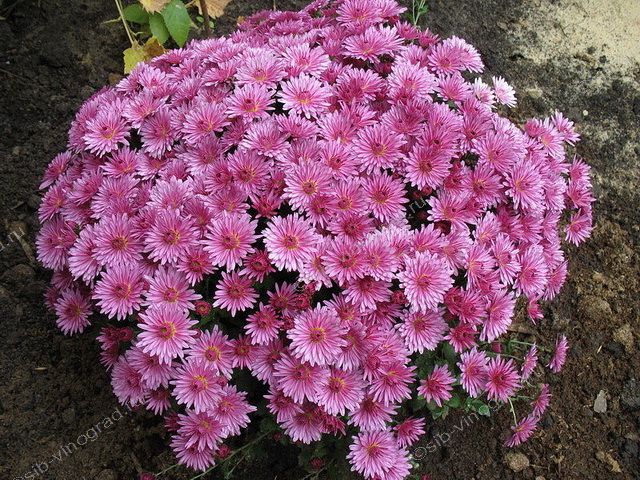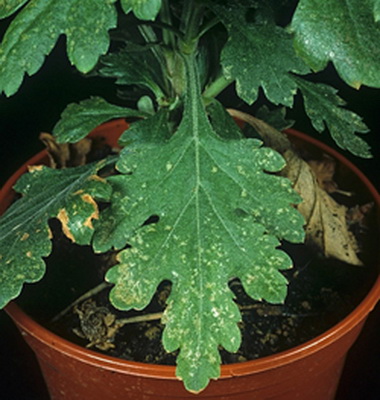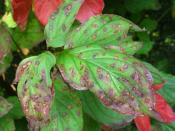Search
Login
Recommended
Chrysanthemums - Varieties, Planting and Gardening
Chrysanthemums are so diverse that without preparation, you simply get confused among the names and species, choosing seeds or seedlings. These magnificent flowers come from Korea, China and Japan are divided into groups according to height, color, shape of flowers. The cultivation of annual chrysanthemums is recommended on balconies and terraces, perennial plants adorn the gardens. Experienced florists love varieties of greenhouse chrysanthemums - you can admire the flowers all year round.
Content:
- Varieties of Chrysanthemums
- Planting chrysanthemums
- Chrysanthemum Care video
- Propagation of chrysanthemums video
- Pests and diseases
Varieties of Chrysanthemums
Chrysanthemums for open ground are resistant to frost, some varieties reach 70 cm in height, bloom in autumn and are available in various shades. Varieties of perennial Korean chrysanthemums are an example of high resistance to low temperatures; they bloom on average from late July to September; the colors of such varieties as Lenver, Bayram, Altyn do not fade in the sun.
Chrysanthemums are perennial varieties Arctic, undersized - up to 30 cm, frost-resistant, dense foliage protects plants from moisture loss in the sultry period, blooms in autumn with white flowers with a diameter of about 5 cm, blooms up to 6 weeks, the variety is ideal for decorating rockeries.

Annual chrysanthemums have an average resistance to frost, bloom from mid-June, propagate by self-sowing and cuttings. Indian varieties are large-flowered, do not tolerate frost, are intended for growing in greenhouses, the advantage of greenhouse cultivation is that at the right temperature (10-15 C) chrysanthemums bloom all year round.

Spherical, terry, anemone ... Chrysanthemums are diverse not only in the shape of the flower, even the most capricious gardener will make them the best composition for the site. Chrysanthemums, planting and care for which does not cause much trouble, with the right actions will delight you with luxurious flowers until late autumn.
Planting chrysanthemums
Regardless of the species and variety, for proper growth and development, chrysanthemums need fertile soil fertilized with humus; during the entire growing season, flowers consume a lot of nutrients. It is better to plant seedlings of flowers on a sunny site in late spring, when there is no risk of frost, before planting, in the fall you should prepare the soil - enrich it with manure or compost, remove weeds.

The distance between the plants is 10-15 cm, between the rows 20 cm. Two weeks after planting, the tops of chrysanthemums are pinched by 1.5 cm, which stimulates growth and flowering. For high varieties, do not forget to establish supports; stems with large flowers are often broken from heavy rains and strong gusts of wind.
Planting seeds for seedlings can begin at the end of March, the seeds are sown in a box with garden soil to a depth of 2 cm, after two weeks all the seeds have already sprouted, the seedlings will be ready for open ground when 4-5 leaves appear.
Chrysanthemum Care
Chrysanthemums are demanding on mineral fertilizers, especially during the period of intensive growth, when flower shoots are forming. The demand for nitrogen increases significantly, with the beginning of flowering, the demand for phosphorus and potassium slightly increases.
Chrysanthemums like moderately moist soil; during the growing season, the irrigation rate for chrysanthemums is 13 liters per 1 square. m. At the beginning of summer, sheltering the soil with mulch is welcomed, which will not only reduce moisture loss, but also help to avoid unwanted self-seeding.
After flowering, chrysanthemums are completely cut off, the leaves are collected and sent to compost for future fertilizer. Marked varieties of chrysanthemums as winter-hardy leave for wintering, while well covering the area with flowers bark.
Gardeners sometimes complain that winter-hardy varieties suddenly die, in fact, winter hardiness is a relative concept, it all depends on climatic conditions. The best prevention against freezing is a good shelter or digging up shrubs and storage in a cool room. Every 3-4 years, chrysanthemums are transplanted to a new place - for the prevention of diseases, pests and nutritional deficiencies.
Propagation of chrysanthemums
Not all varieties of chrysanthemums are propagated by seeds; it is easier to use the cuttings method. Before planting the cuttings, prepare a mixture of peat and sand in a ratio of 1: 1. Cuttings are prepared in early spring from healthy plants, cuttings with 5-6 buds from young shoots are cut, the cuttings are at least 10 cm long.

The cuttings are deepened by 2 cm with a distance of 4 cm between them. For quick rooting of chrysanthemums, it is advisable to keep the temperature at 22-24 C, the container with cuttings is covered with a transparent film for the first 12 days to maintain heat and high humidity. In late April, seedlings are hardened for a week, and then transplanted to the prepared site.
Pests and diseases
Shaded conditions, excessive watering and thickened planting are the main cause of disease in young seedlings. Among chrysanthemums there are no resistant varieties to all fungal and viral diseases. Septoria covers the leaves with brown spots, powdery mildew spoils the plants with a gray coating. These diseases are treated by spraying with fungicides every 7-10 days, infected plants growing near flowers, garbage and falling leaves are destroyed for prevention.

Viral diseases are transmitted by pests - aphids or cicadas, signs of viral diseases, these are yellowed and deformed leaves, reduced growth and flowering. The fight against these diseases is the destruction of pests and infected plants.
In addition to aphids and cicadas, plants should be regularly examined for caterpillars, spider mites and mining flies. The miners leave white streaks on the leaves, the affected parts of the plant twist and dry out, the pests are destroyed with the help of insecticides.
Cicadas, spider mites, like aphids feed on plant sap, effective methods of control among folk recipes - spraying with a soap solution or infusion of garlic, in the absence of effect, specialized products are acquired.





